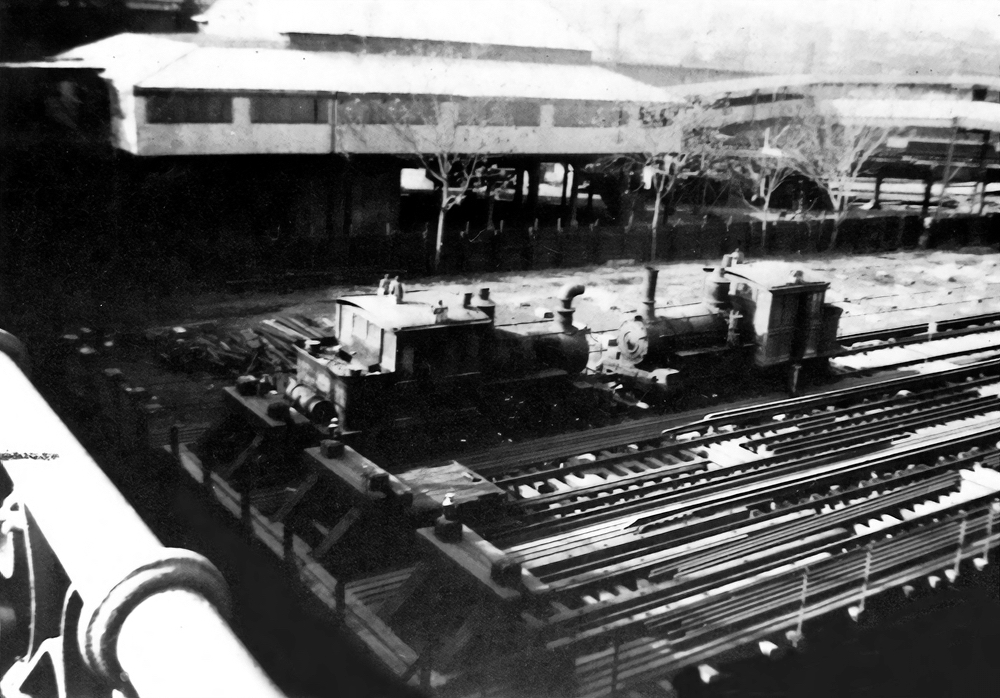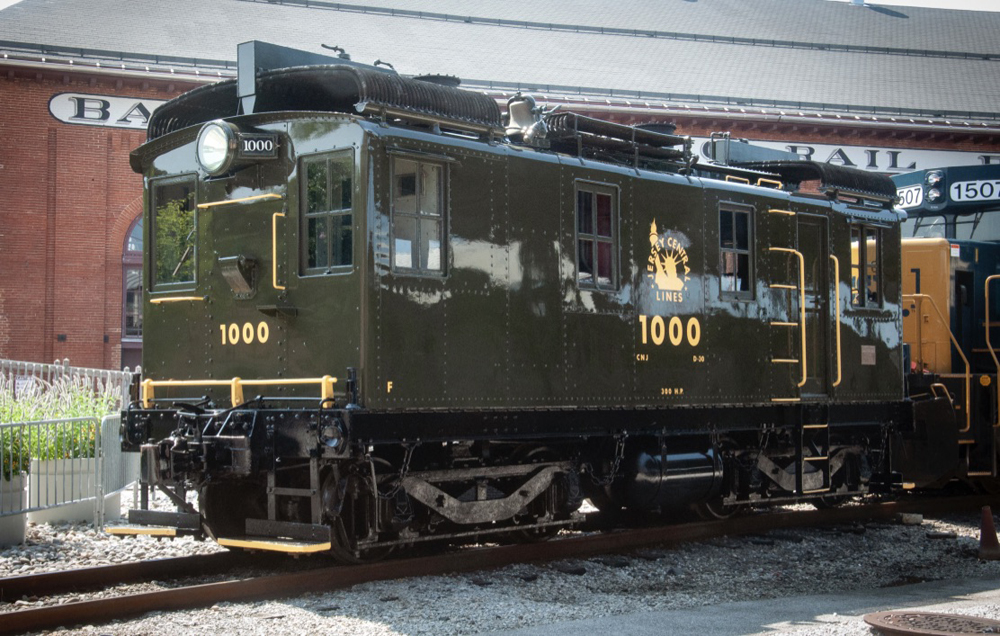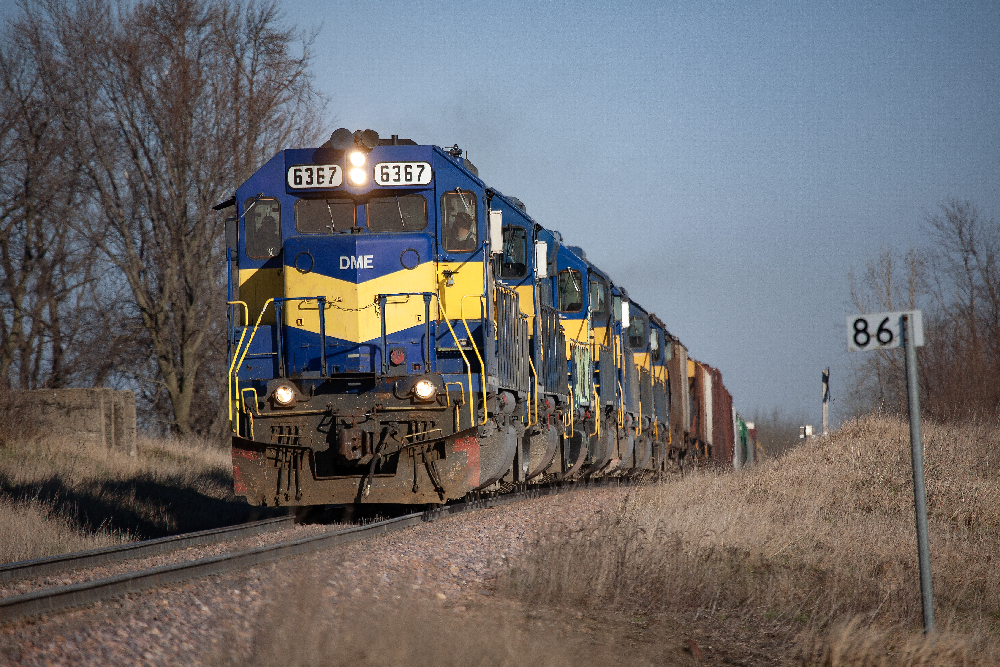Sandfly Express

Go ahead, talk about the glitzy Orient Express. Or the extended run of the Trans-Siberian Express.
But what about the Buffalo & Fort Erie Ferry & Railway Co.?
This early 1900s Canadian railroad, born antiquated, ran a 3-mile course in Fort Erie, Ontario, which is across the Niagara River from Buffalo, N.Y. Its line connected the ferry landing to the Erie Beach Amusement Park.
The postage-stamp railroad had multiple personalities. It generally was called the Dummy but also was known on both sides of the river as the Sandfly Express or the Fort Erie, Snake Hill & Pacific RR.
The career of this micro-railroad — likely Canada’s smallest passenger railroad — was heavily dependent on the success of the amusement park, which had a huge dance hall, the world’s largest swimming pool, a breath-taking roller-coaster and a multitude of amusements including colorful hand-carved carousel animals and a penny arcade with several hand-cranked “movies.”
There was a lot of swaying and yawing motion in those summer vacation-day rides and sometimes discomfort as hot embers swarmed through the clacking cars like enraged hornets. It was commonplace, too, to dust off black soot as you detrained.
The road’s rolling stock consisted of two used locomotives and eight passenger cars bought from the Manhattan Elevated Railroad, which had operated them on the old 6th Avenue El until it was electrified. The locomotives always faced Erie Beach, since there was no facility for turning them, although there was an engine house at the beach. A local resident, Jake Barnhart, was the engineer and Harry McClure, a Buffalonian, was the conductor.
The locomotives were Forney engines, a class of locomotive named for Matthias N. Forney, whose highly collectible Catechism of the Locomotive was reprinted in book form in 1879. Forney’s considerable lore and knowledge make up the chief content of this question-and-answer volume, which runs to 609 pages. It is equally rich in illustrations and data. One of the smart-looking illustrations shows Forney’s “Improved tank locomotive” design.
Engine No. 272 was bought in New York in 1901 with two cars; engine No. 271 and six cars followed three years later. The interior of these green-colored coaches, by the way, represented quality workmanship — elegant brass lamps and fixtures and fine birdseye maple paneling.
Edgar F. Greene, a former Fort Erie resident, told me of the trains passing his home on Lake Shore Road daily during those distant summers. Winter, of course, was especially rough on the right-of-way.
“On many occasions,” he recalled, “the tracks were washed out by high water and huge ice floes driven down Lake Erie by winter gales.
“I recall only one mishap. This was a derailment of one or two cars of a train in front of the old fort, when a drunken switchman threw a switch as the train was passing over it. No injuries occurred but the schedule was badly upset that day.”
Railroad crews were busy each spring putting back together the dislocated standard-gauge track and replacing sections lost in storms.
Trips to the lakeside beach during the week ordinarily were made with one locomotive and one car. Busy weekends and holidays — both Canadian and American — saw both locomotives hauling four crowded cars. The schedule extended from Decoration Day to Labor Day. The run to the beach was about 20 minutes with the first train departing about 6:30 a.m. and the last about midnight.
Thousands of individuals were carried to light-hearted recreation on this neighborly yet internationally known railroad, including, in its later days, many Prohibition-dry Americans thirsting for Canadian liquor.
Sadly, the Sandfly Express, or whatever nickname you prefer, was done in by the time and circumstances. Completion of the Peace Bridge between Buffalo and Fort Erie in 1927 and heavy automobile buying detoured thousands away from the ferry-train trip to the amusement park. In addition, there was heavy competition from the more-distant Crystal Beach Park (Ont.), which involved a much longer and more enjoyable lake boat ride than the brief 5-cent ferry ride across the river to Erie Beach.
The Great Depression, however, wrote the obituary. Both the Erie Beach Amusement Park and the railroad ceased operation on Labor Day 1930.
Thousands of ties became firewood for residents adjacent to the tracks; the rails were bought by junkmen and the two ancient locomotives were broken up and sold for scrap. A few passenger cars, however, survived and with imaginative carpentry became cottages.














Reading about the two Forney steam locomotives from the 19th century Manhatten elevated subway, reminded me of an article I read about 3 more of those Forney Manhatten elevated engines abandoned in the Alaskan tundrs near Nome. https://www.steamlocomotive.info/nlocoalbum.cfm?which=1553
Three more? There seems to be four boilers.